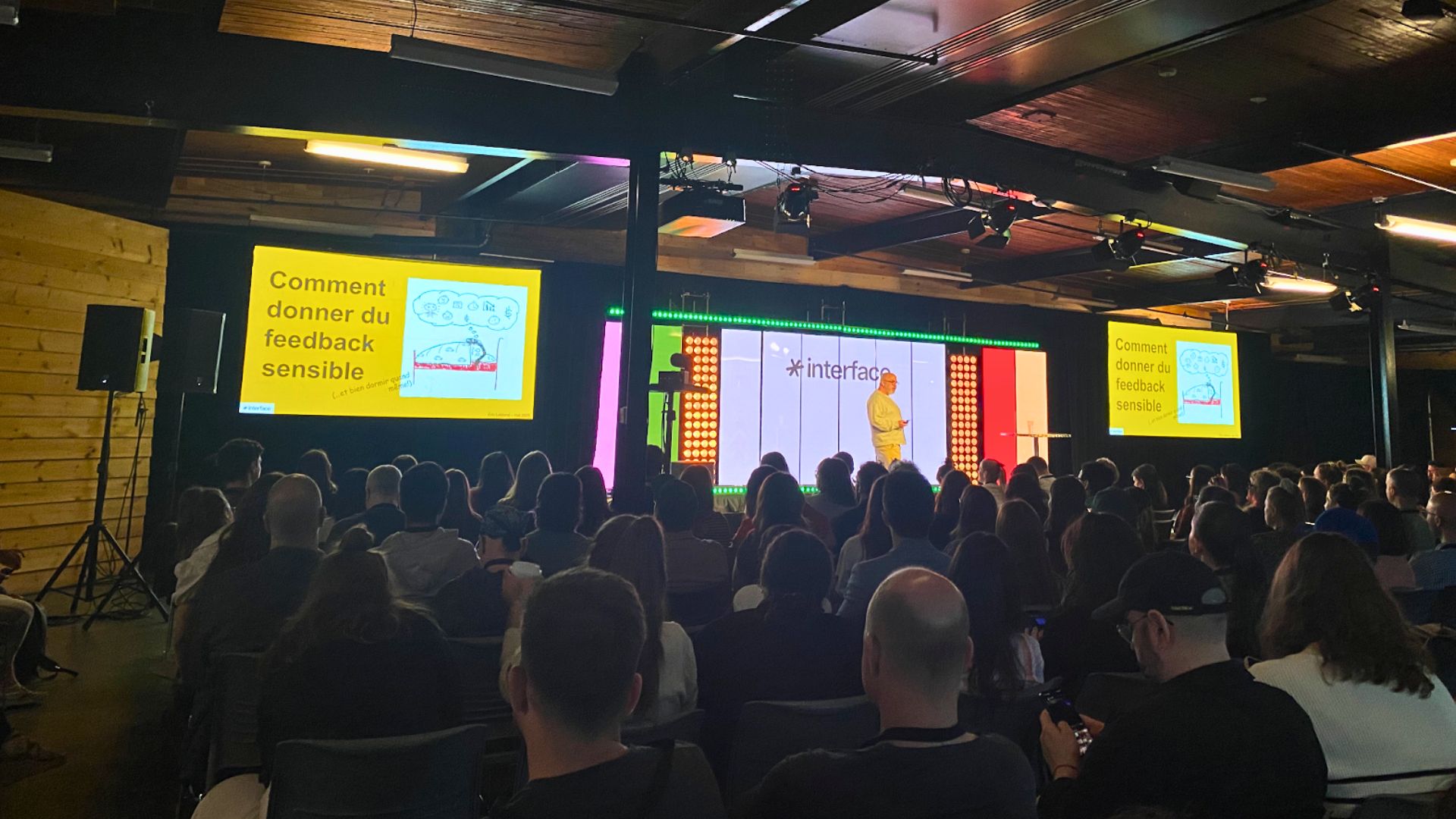« L’école virtuelle n’est pas faite pour tous les élèves, mais reconnaissons que l’école en présence n’est pas faite pour tous non plus », soutient Marie-Claude Harnois, directrice générale d’Étude Secours, un service éducatif en ligne qui permet aux jeunes du secondaire de compléter certains cours de base. Elle a participé à la présentation de différents projets d’écoles virtuelles à l’occasion du plus récent Sommet du numérique en éducation.
Un bloc de conférences de l’édition 2022 du Sommet du numérique en éducation était réservé à la présentation de projets d’écoles virtuelles. Trois initiatives bien distinctes ont été partagées.
En Nouvelle-Écosse
Le Conseil scolaire acadien provincial (CSAP), qui regroupe les 22 écoles de langue française de la Nouvelle-Écosse, offre une école virtuelle depuis 2012. Celle-ci permet d’offrir plus de choix de cours aux élèves de 11e et 12e année. Tous les cours de l’école virtuelle sont disponibles pour les élèves de toutes les écoles.
Dans les établissements scolaires, un local est réservé aux élèves qui suivent des cours de l’école virtuelle. Les élèves inscrits peuvent suivre en alternance des cours « réguliers » et des cours en ligne. Leur grille-horaire est construite en conséquence. Ainsi, 33 % des élèves de 11e et 12e année du CSAP suivent des cours en ligne.
L’équipe de l’école virtuelle est composée de sept enseignants, de deux concepteurs et d’une coordination. Lucie Michaud et Éric Therrien, tous deux concepteurs de ressources numériques pour l’école, ont présenté le fonctionnement de l’école.
« Les cours sont préparés à l’avance pour les enseignants et sont disponibles dans la plateforme Moodle. Les cours se déroulent de façon synchrone, mais les enseignants ont un rôle de facilitateur. Les élèves doivent progresser dans le parcours de manière autonome et se réfèrent à l’enseignant en cas de besoin. Les enseignants réalisent aussi des entrevues individuelles avec les élèves pour s’assurer de la progression de leurs apprentissages », ont-ils expliqué.
Les éléments-clés
- Conception universelle des apprentissages (CUA) dès le départ pour tout le contenu (vidéo, texte, infographie, etc.)
- Approches pédagogiques variées (enquête, ludification…)
- Pédagogie sensible à la langue et à la culture (Savais-tu…, image)
- Flexibilité (guides, points de contrôle : tu devrais être rendu là)
- Pas d’examen (accumulation de traces d’apprentissage)
- L’élève participe à l’amélioration des cours (sondage aux élèves sur la rétroaction par rapport aux cours)
- Contenu 100 % numérique
Les succès
- Le taux de rétention (élèves et enseignants)
- La responsabilisation des élèves dans leur apprentissage – apprentissage guidé
- Le taux de réussite
- Une bonne connaissance des élèves
- La pandémie n’a pas affecté le fonctionnement de l’école
- Toutes les écoles du CSAP connaissent le modèle hybride.
En Colombie-Britannique
À l’autre bout du Canada, Florence Pionetti enseigne les langues (français et espagnol) de façon complètement asynchrone à des élèves de niveau secondaire à l’Abbotsford Virtual School (AVS). Des élèves sportifs qui ne peuvent suivre les cours réguliers, et d’autres qui souhaitent progresser plus rapidement ou qui éprouvent de l’anxiété en salle de classe, font partie de ses élèves. Elle accueille également des jeunes des Territoires du Nord-Ouest et du Yukon qui n’ont pas accès à des classes de français et d’espagnol dans leur milieu.
Elle mise sur la communication, la diversité des ressources et le choix des activités proposées pour les engager dans leurs apprentissages. Tout comme l’école virtuelle du CSAP, elle a adopté la conception universelle des apprentissages pour la préparation des leçons.
Des pratiques gagnantes pour :
- L’engagement par la communication
- L’enseignante se présente par vidéo.
- Les élèves doivent aussi se présenter par vidéo.
- Des occasions de rencontres sont proposées (en personne ou en ligne, individuelles ou en groupe), en plus d’entrevues de mi-semestre.
- L’enseignante doit faire sentir sa présence de façon continue.
- L’engagement par la pédagogie
- Le programme de langues est basé sur les compétences orales et écrites, linguistiques et culturelles.
- La variété et le choix d’activités (contenu et format).
- Les élèves peuvent faire entendre leur voix (opinion et créativité).
- Des activités collaboratives sont organisées.
- La conception de cours inclusive et universelle
- La différenciation et l’adaptation sont importantes.
- Il faut tenir compte de l’accès à Internet qui est variable (prévoir des ressources qui s’impriment).
- Les aspects audiovisuels apportent de la valeur (mais tenir compte du point précédent).
- Le suivi individualisé et personnalisé du progrès de chaque élève.
- Le soutien de la « communauté » de l’apprenant.
Au Québec
Étude Secours est un service éducatif en ligne qui permet aux jeunes du secondaire de compléter certains cours de base (tels que français, anglais, mathématique, sciences, histoire). L’organisation a été reconnue officiellement par le ministère de l’Éducation du Québec comme école virtuelle pour les élèves de 4e et 5e secondaire, à l’exclusion du cours d’Éducation physique et à la santé. Cela lui permet de dispenser elle-même les évaluations finales pour les matières obligatoires plutôt que de passer par des centres de services scolaires partenaires.
Il est possible de commencer l’apprentissage à tout moment de l’année. Les cours sont offerts en formule synchrone ou asynchrone. Les écoles peuvent contacter l’organisation pour inscrire des élèves et ceux-ci peuvent aussi s’inscrire eux-mêmes. Un lien est maintenu avec l’école bassin en tout temps.
Lors de la présentation au Sommet du numérique en éducation, Marie-Claude Harnois a présenté un aperçu d’ESRA, la nouvelle plateforme développée par Étude Secours. Celle-ci offre aux élèves, aux enseignants et aux parents un lieu unique pour suivre les formations et la progression des apprenants. Les contenus y sont disponibles pour les cours asynchrones et les cours synchrones y sont dispensés. Des forums de discussion, des fonctions de clavardage et de messagerie, un portfolio personnalisé de l’élève y sont aussi offerts.
La plateforme ESRA est actuellement expérimentée par quelque 1 000 jeunes québécois. Elle sera éventuellement déployée pour tous les élèves de l’école virtuelle. Une équipe de recherche de l’Université de Sherbrooke suit d’ailleurs les jeunes dans leur parcours afin d’en tirer des conclusions.
Des constantes
À travers les trois exemples, des constantes ressortent. Lorsqu’il s’agit de l’école virtuelle, les enseignants deviennent davantage des guides et des accompagnateurs. lls doivent se placer en mode découverte et écoute avec leurs élèves, en plus de faire preuve de flexibilité et de créativité. La disponibilité est également un facteur important.
Du côté des élèves, la motivation peut parfois être difficile à maintenir. « L’enseignant doit nourrir l’élève en ligne pour qu’il reste actif et motivé. Normalement, un élève qui est bien accompagné réussit », a conclu Mme Harnois.














